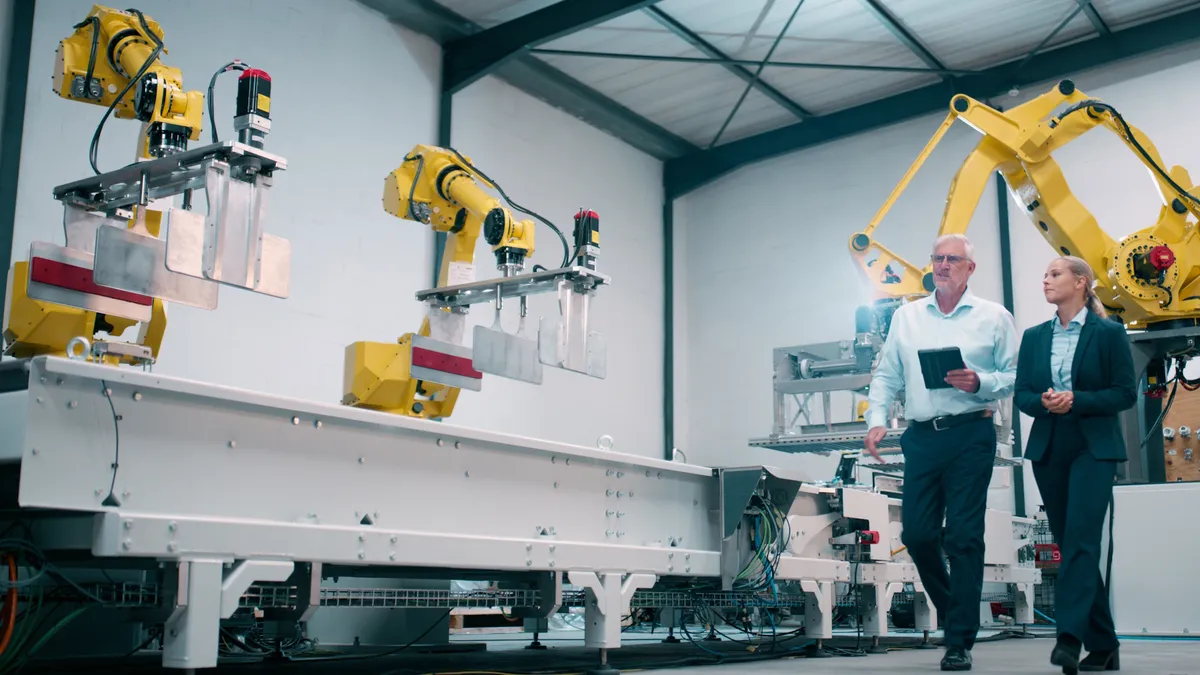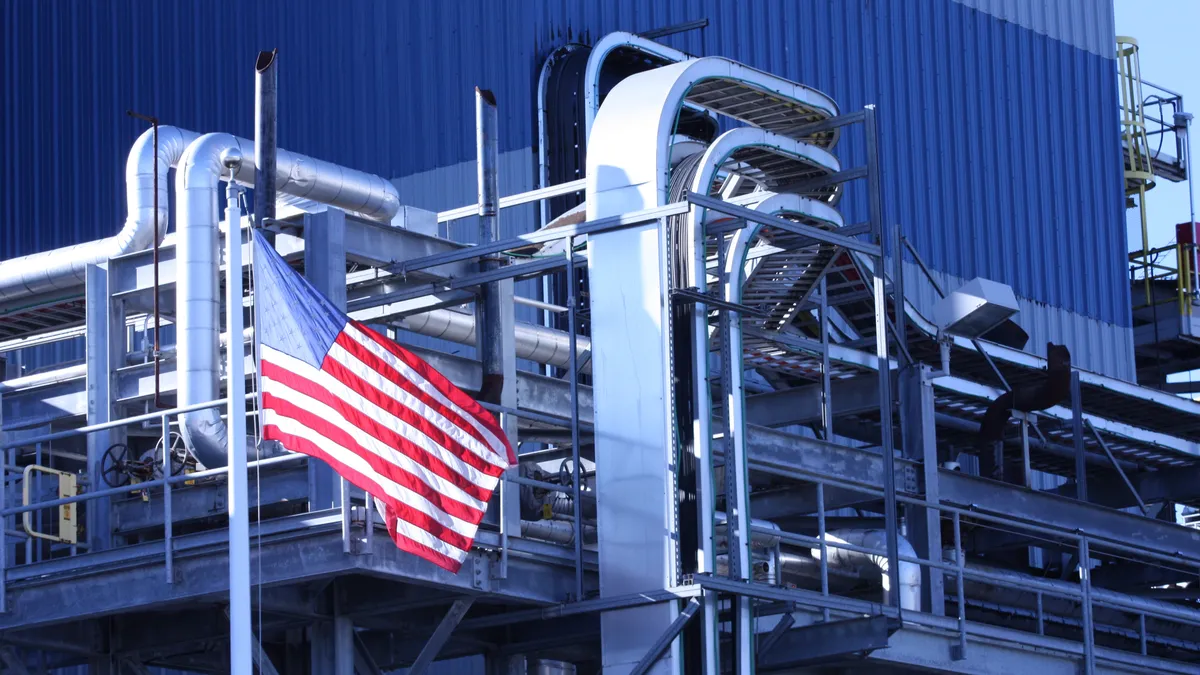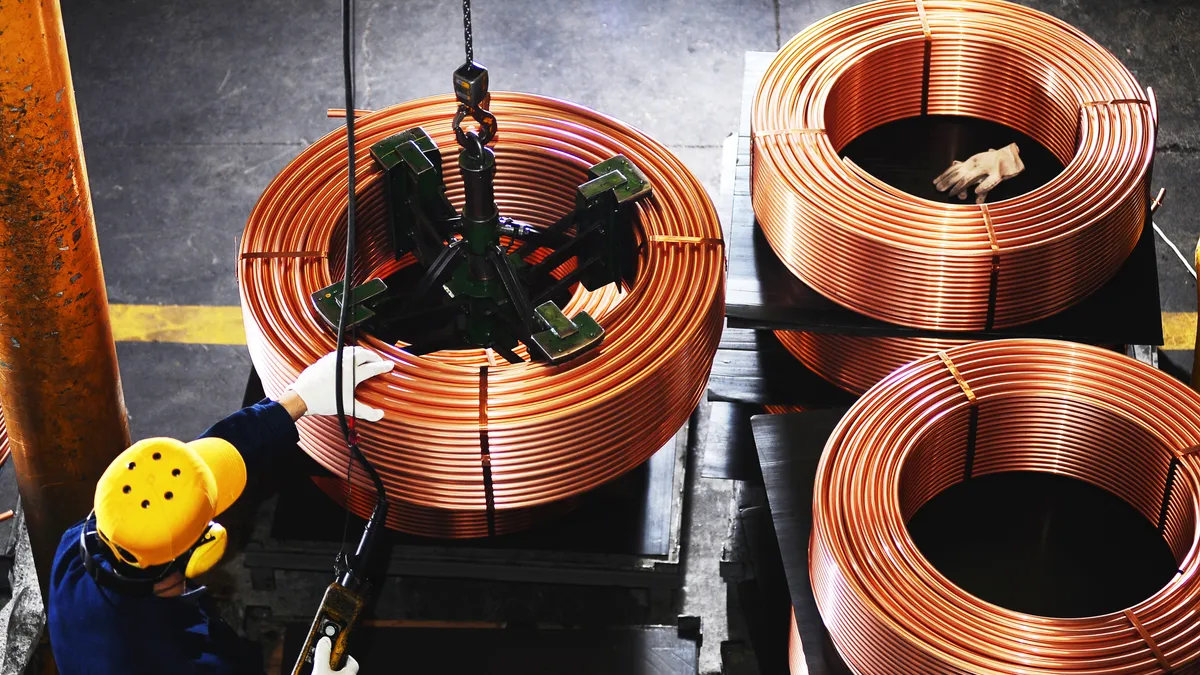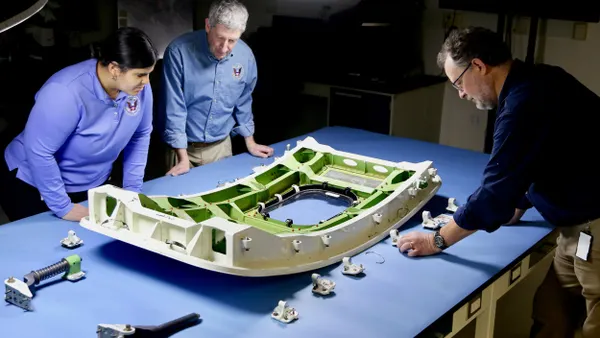The U.S. manufacturing sector is resilient, optimistic and ready to face new challenges as they emerge. Manufacturers are bullish on new opportunities, especially when it comes to investing in improved technology and automation, embracing sustainable initiatives and pushing for better transparency and accountability across the supply chain.
The optimism is palpable: Nearly all middle-market manufacturers (93%) recently surveyed by Eide Bailly and Manufacturing Dive’s studioID are confident in their organizations’ ability to pursue business growth opportunities. The 300 survey participants were senior-level executives and VPs representing a variety of U.S. industries, including manufacturers and distributors operating in the food, metal machine & product, high-tech and chemical sectors, among others.
The survey report, which launches in January 2025, explores how middle-market manufacturing leaders are navigating several key trends, their optimistic outlook in light of the challenges they face and which growth opportunities they plan to prioritize.
Supply Chain, Logistics and Transportation Challenges
Rising transportation costs, supplier bottlenecks and logistical inefficiencies are driving ongoing disruptions for manufacturers. According to the survey, supply chain disruptions (52%), rising business costs (35%) and high interest rates (26%) were among the top concerns for industry leaders.
In the supply chain management realm, 41% of middle-market manufacturers are concerned about rising transportation costs and 39% say they currently face supplier issues. Other top supply chain challenges include limited transparency (21%), transportation and logistics disruptions (21%) and material scarcity (19%).
These trends and concerns align with Eide Bailly’s feedback from the manufacturing sector, says Dave Glennon, partner and manufacturing industry leader at Eide Bailly. While the sector’s current pain points aren’t new — for example, issues like lack of supply chain transparency and ongoing material scarcity are fairly common for this sector — the issues are constantly evolving.
Optimizing Existing Technologies and Implementing New Enhancements
Many manufacturers are turning to technological solutions and innovations to combat these issues. Over the next three years, 94% of respondents plan to increase their investments in technology and automation to improve operations.
“Manufacturers clearly realize that if they’re not investing in technology, they’re falling behind,” Glennon says. “They also know that equipping their team with the necessary digital solutions can make them more productive, efficient and engaged. Many organizations want to be able to take the technologies we’re all using in our personal lives and use them in the business world. Technology is everywhere and manufacturers recognize that.”
For 63% of respondents, updating their existing technologies represents one of the largest growth opportunities. Technological investments are focused primarily on core business systems like ERP and MES (64%) and advanced analytics (56%). Manufacturers are also investing in artificial intelligence, cybersecurity solutions, smart machines and digital/e-commerce sales platforms.
Most organizations also recognize the value of using data to qualify suppliers, improve production processes, monitor equipment and increase customer satisfaction. After all, these companies process massive amounts of data daily — from equipment performance to production data to customer reviews. Measured and leveraged effectively, those insights can help optimize manufacturing operations, reduce risk and drive better business decisions.
AI Readiness
Another key focus area is artificial intelligence (AI). According to the survey, 39% of manufacturers have experimented with AI, 26% plan to experiment with AI and 24% have already integrated AI into some operations and plan to expand the use of AI.
In order to fully leverage AI capabilities, organizations will need to prioritize the rationalization of their data, all while increasing focus on cybersecurity and data privacy. But for many organizations, AI readiness is far off; a third of manufacturers surveyed say their organizations still use spreadsheets for manual data entry.
“A good AI strategy is a good data strategy,” says Dave Glennon, partner and manufacturing industry leader at Eide Bailly. “Data is one of the key building blocks for using AI and other advanced tools, so you really have to get your data house in order first.”
As data becomes increasingly important, organizations will also need to prioritize cybersecurity and data privacy. Currently, 25% are already investing in cybersecurity solutions and 22% of manufacturers say improving cybersecurity measures will be among their top business goals over the next three years.
Talent Acquisition and Retention
Like most sectors, manufacturers face increasing competition for skilled workers – 24% of organizations even say this is one of their top challenges, according to the survey. Nearly all respondents say their organizations are currently looking to fill skilled labor roles.
In order to recruit and retain employees and set their organizations apart from competitors, many organizations are focusing more on compensation and benefits packages, workforce training and diversity, equity and inclusion (DEI) initiatives. For example, 30% plan to offer more competitive compensation and benefits and 17% will focus on improving employee retention as a core business goal in the coming years.
Many manufacturers are prioritizing DEI initiatives that widen their potential labor pools and help create a more inclusive, engaging work environment across the enterprise. Industry leaders are rethinking how they hire, train and retain their valuable labor forces, Glennon says, also in part due to a retiring workforce and Gen Zers’ expectations of what “work” looks like.
To buck the trend, more organizations are offering reskilling and upskilling opportunities that foster professional growth and experience different job roles. Some of these initiatives are geared toward getting employees more comfortable with the idea of working with co-bots and other automated/semi-automated equipment that can handle daily, repetitive tasks.
“Organizations can't just bring in this new technology — be it co-bots or an automated packaging line — and not have the right people to run it,” Glennon says. “This is one key reason why more manufacturers are reskilling and upskilling their existing labor forces right now.”
2025 Outlook
Whether it’s a looming port strike, a shortage of raw materials, or disruption in their supply chains, Glennon says middle-market manufacturers are always ready to tackle the next challenge.
For example, the survey found that 45% of manufacturing leaders are optimizing inventory management strategies and improving their end-to-end supply chain visibility. Organizations are also using technology to optimize their supply chain networks, adding new products or product lines, targeting niche markets and near-shoring or reshoring more of their sourcing and production.
The vast majority (85%) of those surveyed expect production increases over the next 12 months, while 15% say volumes will stay the same. This paints a picture of a very optimistic U.S. manufacturing sector, and Glennon expects much of this growth will be backed by technology and data.
“Smart companies are strategizing around their supply chains, and that starts with having the right data to work with,” Glennon says. The shift to become a data-driven organization can be difficult, but the extra effort and investment can yield a significant payoff. Going forward, he expects more manufacturers to adopt a data-driven mindset that starts on the shop floor and extends across the supply chain to end customers.
Contact Eide Bailly to learn more about how you can better navigate today’s supply chain challenges and unlock new opportunities.










